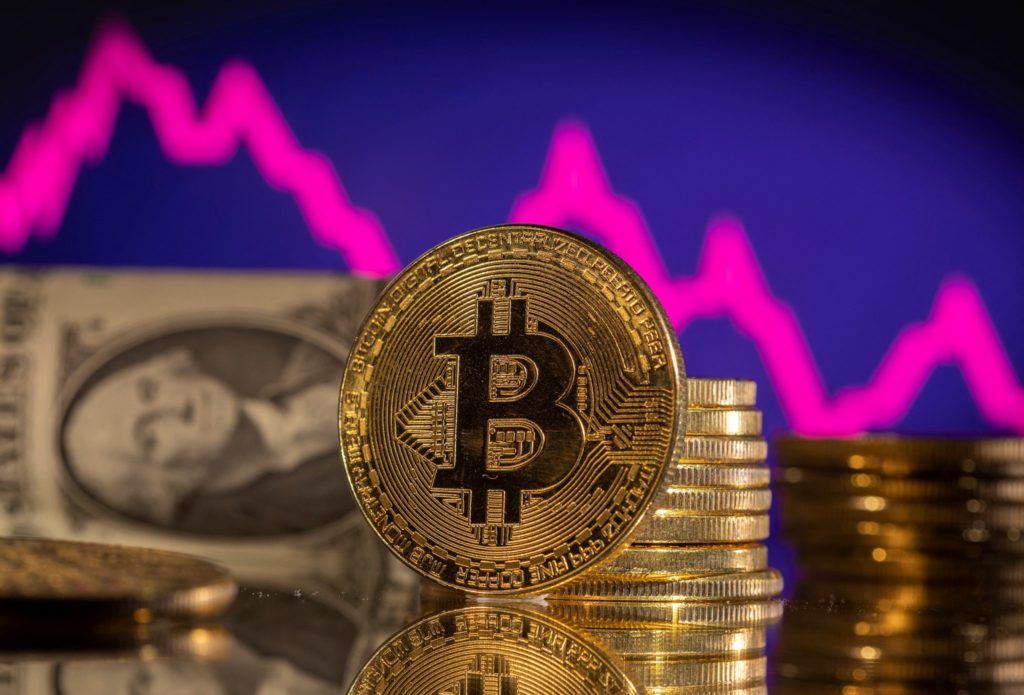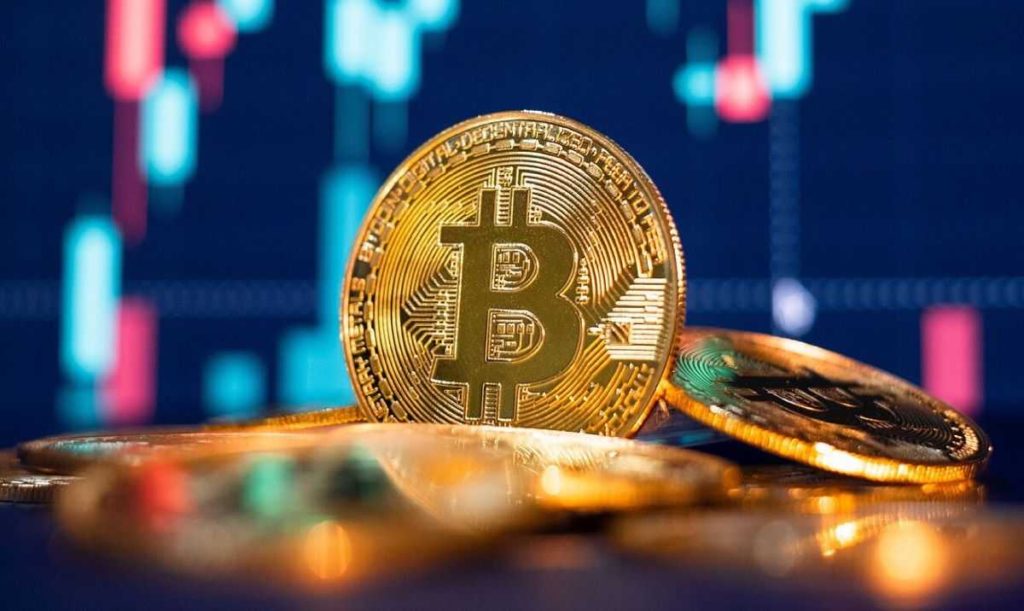Recent on-chain data reveals a compelling narrative in the world of Bitcoin (BTC) as holders continue to accumulate the digital asset. The statistics depict a scenario where exchange holdings have plummeted to yearly lows, while the proportion of dormant BTC supply has surged to unprecedented levels.
Glassnode’s Bitcoin supply last active chart highlights this trend, showcasing that the amount of inactive BTC, untouched in addresses for one, three, and even five years, has reached historic highs since July 2023.
These findings resonate with Bitcoin analytics from CoinMarketCap, which tracks wallet addresses based on the duration of BTC holding. Remarkably, a staggering 69% of addresses, equivalent to 36.8 million, have maintained their BTC holdings for over a year.
CryptoQuant’s data further reinforces this trend by indicating a consistent decline in Bitcoin outflows from exchanges since July 2021.
Currently, a meager 2 million BTC remains on various exchanges, reflecting a substantial decrease over time.
For a more granular view, the CoinGlass Bitcoin on exchanges tracker dissects the circulating BTC holdings among major centralized exchanges.
Leading the pack is Binance, boasting 543,281 BTC on its platform. However, it’s worth noting that Binance has experienced a notable exodus of Bitcoin in the past month, with 21,645 BTC withdrawn.
Coinbase Pro secures the second position with a BTC balance of 435,530.
READ MORE: Cryptocurrency Market Sees Bullish Momentum Amidst Bitcoin’s Recovery
Similar to Binance, this U.S.-based exchange has witnessed 3,612 BTC being withdrawn over the last 30 days.
Interestingly, OKX stands out as the only exchange in the top 10 to have observed a substantial inflow of Bitcoin in the same period, with 4,630 BTC flowing onto its platform.
The broader context of these developments involves market commentators and analysts making bullish predictions about Bitcoin’s potential value.
These sentiments are fueled by the anticipation of the highly-awaited mining reward halving, scheduled for 2024.
As Bitcoin holders increasingly opt to store their assets securely in non-exchange wallets, the crypto community is left to speculate on the potential for further price appreciation in the coming years.
These accumulating patterns suggest a strong belief in Bitcoin’s long-term value and utility as a digital store of wealth.
Other Stories:
Dubai-Based Cryptocurrency Exchange Faces Liquidity Crisis Amid Regulatory Scrutiny
DeFi Ecosystem Faces Challenges as On-Chain Activity Declines and Stablecoins Feel the Pressure
Bitcoin has shown signs of a positive turnaround as it formed successive Doji candlestick patterns on the weekly chart over the last three weeks.
This indicates a resolution of the uncertainty between the bulls and bears in favor of the bulls.
However, the upcoming Federal Open Market Committee meeting on September 20 could introduce volatility, depending on the outcome of Fed Chair Jerome Powell’s press conference following the rate decision.
Most market participants anticipate the Federal Reserve to maintain the current interest rate levels.
Bitcoin’s recovery from strong support near $24,800 has sparked interest in select altcoins, which present trading opportunities.
For these altcoins to sustain their upward trajectory, Bitcoin must remain above $26,500.
Bitcoin has recently surpassed the 20-day exponential moving average ($26,303), indicating a reduction in selling pressure.
The bulls have successfully defended against several bearish attempts to push the price below the 20-day EMA.
If buyers manage to push the BTC/USDT pair past the 50-day simple moving average ($27,295), it may reach $28,143, though this level is expected to face resistance from bears.
Conversely, if the price drops below the 20-day EMA, it could retest the pivotal support at $24,800.
Similarly, altcoins like MKR and AAVE have displayed bullish signs, with MKR above the 50-day SMA ($1,162) and AAVE surging past moving averages on September 16.
MKR/USDT could head towards $1,370, though the level may witness a battle between bulls and bears.
Conversely, if the 20-day EMA ($1,162) is breached, the pair might consolidate within the range of $980 to $1,370.
READ MORE: Bitcoin Miner Returns $500,000 in Fees to Paxos After Transaction Mistake
As for AAVE/USDT, a sustained price above the 50-day SMA ($59) could drive it towards $70 and $76, but a drop below the 20-day EMA ($56) could lead to a decline to the solid support at $48.
THORChain’s RUNE has made a smart recovery, nearing the resistance at $2.
If it breaks through, it may initiate a new uptrend to $2.30 and eventually $2.80.
However, a sharp downturn from $2 could push the price down to the 20-day EMA ($1.62).
Lastly, RNDR broke out and closed above the 50-day SMA ($1.58), suggesting reduced selling pressure.
The moving averages are on the verge of a bullish crossover, and a bounce from the 20-day EMA ($1.50) could lead to a stronger recovery to $1.83 and $2.20.
On the contrary, a drop below the moving averages could send RNDR/USDT down to $1.38 and later to $1.29.
In summary, these cryptocurrencies show promising signs, but their paths forward depend on key support and resistance levels, as well as broader market factors like the Federal Reserve’s decisions.
Other Stories:
BitQuant Predicts Bitcoin Will Hit $250,000 After Halving
DeFi Advocacy and Market Dynamics: A Week of Intense Developments in Decentralized Finance
Bitcoin (BTC) concluded the week ending on September 17th with a price of approximately $26,500, showcasing a sense of stability after reaching new highs earlier in the month.
This weekend marked a period of relative calm for the leading cryptocurrency, as indicated by data from Cointelegraph Markets Pro and TradingView.
Just a couple of days prior, Bitcoin had surged to $26,880, marking its highest level for the month.
Credible Crypto, a renowned trader and analyst, examined the state of the Binance BTC/USD order book and observed a cluster of bid liquidity supporting the market.
He noted that some seller absorption was occurring at this level, suggesting a defense of this price point.
Amid this period of consolidation, another trader named Crypto Tony identified two potential scenarios. He highlighted that $26,000 was still acting as a strong support level.
Tony mentioned, “I am still looking for that dip down to $26,100 and a bounce for a long trigger.” Alternatively, he would consider going long if Bitcoin managed to reclaim the $26,600 highs.
READ MORE: DeFi Pioneer Rune Christensen Envisions Decentralized Stablecoins Dominating the Crypto Market
Examining exchange behavior, trader Skew pointed out specific short-term trends among traders, particularly spot entities selling into bounces.
This indicated a pattern of aggressive positions being hunted heading into the next week.
Beyond Bitcoin’s weekly close, participants in the crypto market were eagerly anticipating a crucial macroeconomic event from the United States Federal Reserve scheduled for September 20th.
The Federal Open Market Committee (FOMC) meeting would decide on benchmark interest rates, with the prevailing expectation in the markets being that they would remain unchanged.
CME Group’s FedWatch Tool assigned a mere 2% probability to a surprise scenario.
It’s worth noting that Bitcoin had recently displayed a decreased sensitivity to macroeconomic data, and many believed that it would continue to trade within the range of $25,000 to $27,000 in the short term, even in the face of the upcoming FOMC meeting.
As popular trader Crypto Santa concluded, “Next week’s FOMC and Interest Rate decisions should induce some volatility, but BTC will likely continue to trade within $25k – $27k in the short-term.”
Other Stories:
Ethereum’s Energy Efficiency Soars: The Aftermath of The Merge
Crypto Markets Brace for Uncertainty as Regulatory Storm Looms
Bitcoin Bucks Inflation Worries, Surges to New September Highs
In August, the crypto markets experienced their most challenging month since Bitcoin hit rock bottom in November 2022.
Initially dismissed as a mere summer slump, this downturn turned out to be a significant market setback, primarily fueled by cascading liquidations in the derivatives sector.
This led to a daunting 7.3% loss in Bitcoin’s value and a 6.9% decline in Ether’s value.
Grayscale’s legal victory briefly provided respite, but prices quickly retraced to their month-start levels, triggering one of the largest liquidation events in crypto, resulting in over $1 billion in losses as Bitcoin plummeted to $26,000.
Adding salt to the wound, venture capital (VC) investments plunged by a staggering 42.7% from July to August, amassing a modest $401.9 million across 77 deals.
This marks a sharp decline in crypto industry investment, which had been on an upward trajectory until May of that year.
Cointelegraph Research’s “Investor Insights Report” delves into the performance of various digital asset sectors in this challenging environment, providing a concise monthly roundup of crypto developments spanning venture capital, derivatives, decentralized finance (DeFi), regulation, mining, and more.
Venture capital investments in the blockchain sphere have been on the decline since the second quarter of 2022, reaching a new low of $401 million in 2023.
Infrastructure projects secured 18 deals, raking in $107 million in August, with centralized finance (CeFi) securing $100 million through just three deals.
These lagging investments hint at a potential resurgence once market sentiment shifts positively.
READ MORE:Binance.US Challenges SEC’s ‘Unreasonable’ Demands in Legal Showdown
Despite the gloom, the words of Tim Draper resonate: “Investors always get it wrong.”
This suggests that the downtime may be the opportune moment to identify quality projects for long-term holding, anticipating the return of the bull market.
On August 25th, $1.9 billion in monthly Bitcoin options expired, stirring speculation in the markets.
Although Bitcoin’s price remained relatively stable during this period, excitement surged following news of the SEC’s court defeat against Grayscale.
This victory potentially paves the way for a future spot Bitcoin ETF.
The price briefly soared to $28,000 before retreating to the $26,000 range.
While short-term gains were elusive, there are promising signs of market support at this level.
Cointelegraph’s Research team boasts a blend of top talents in the blockchain industry, blending academic rigor with practical experience.
With decades of collective expertise in traditional finance, business, engineering, technology, and research, the team is dedicated to delivering accurate and insightful content, exemplified by their latest Investor Insights Report.
Other Stories:
Arbitrum and Optimism Networks are on BetFury
Binance.US Challenges SEC’s ‘Unreasonable’ Demands in Legal Showdown
2023 Crypto Venture Capital Funding Plummets As Industry Faces Uncertain Times
BitQuant, a renowned social media commentator in the cryptocurrency sphere, has set a bold price prediction for Bitcoin.
While many anticipate Bitcoin’s price to surge as it approaches its next block subsidy halving, BitQuant’s forecast suggests that it will reach new all-time highs even before this event.
In a recent post on X, formerly known as Twitter, BitQuant, operating under the pseudonym of a “central banker and Bitcoiner,” disclosed a pre-halving target exceeding $69,000.
He emphasized that Bitcoin would not reach its peak before the halving, but rather, it would attain a new record high.
Currently, Bitcoin has a little over six months left before the halving, an event that reduces miner rewards by 50% every four years.
Analysts contend that this reduction in supply emissions tends to catalyze a surge in Bitcoin’s price, acting as a launching pad for new all-time highs.
BitQuant, however, remains even more bullish in his outlook.
READ MORE: Arbitrum and Optimism Networks are on BetFury
He believes that not only will Bitcoin surpass its existing all-time high, established in 2021, before April, but it will eventually reach an impressive $250,000 per coin after the commencement of the next halving cycle in 2024.
Contrary to BitQuant’s optimism, the cryptocurrency market is marked by a stark division of opinions regarding Bitcoin’s price trajectory leading up to and following the halving.
While some share BitQuant’s optimism about higher prices by April, many adopt a more conservative stance.
Jesse Myers, a Bitcoin investor and author, dismisses the idea of BTC/USD hitting six figures before the halving.
Meanwhile, Filbfilb, co-founder of trading suite DecenTrader, projects a pre-halving BTC price ceiling of $46,000, barring any unforeseen black swan events.
As of September 15, Bitcoin was trading at approximately $26,400, marking a 1.3% increase in September so far, according to data from monitoring resource CoinGlass.
While the future remains uncertain, BitQuant’s prediction has certainly added to the ongoing debate about Bitcoin’s price trajectory, leaving the cryptocurrency community eager to see how events unfold in the coming months.
Other Stories:
US and Vietnam Forge Multi-Billion Dollar AI and Tech Partnerships
2023 Crypto Venture Capital Funding Plummets As Industry Faces Uncertain Times
Binance.US Challenges SEC’s ‘Unreasonable’ Demands in Legal Showdown
A Bitcoin miner recently found themselves in an unexpected predicament involving a substantial sum of cryptocurrency.
They received a staggering 19.8 BTC in fees from blockchain infrastructure firm Paxos, only to later return the funds.
The reason behind this dramatic turn of events was Paxos’ claim that they had made a grievous mistake, inadvertently paying over $500,000 in transfer fees.
The cryptocurrency community was left bewildered on September 10th when a Bitcoin transaction caught their attention.
This transaction entailed paying approximately $500,000 in fees to move a mere $2,000, a stark contrast to the typical network fee of around $2.
Various speculations circulated within the community, with some speculating that the error occurred due to a data copy-paste mishap, inadvertently placing an output value into the fee box without verification.
Subsequently, on September 13th, Paxos stepped forward and acknowledged responsibility for the transaction mishap.
They reassured their users that their funds remained secure and were the rightful property of Paxos.
Additionally, Paxos clarified that PayPal had no involvement in the mistake, conceding that the error was entirely their own.
READ MORE: Arbitrum and Optimism Networks are on BetFury
Almost a day after Paxos’ admission, the Bitcoin miner who had received the excessive fees turned to social media, specifically X (formerly Twitter), to voice their frustrations.
Ultimately, they agreed to refund the entire amount to Paxos.
Seeking advice from their X followers, the miner asked what course of action they should take, with a majority of respondents suggesting the funds be distributed to other Bitcoin miners.
However, it appears this counsel was not heeded, as blockchain data from Bitcoin explorer Mempool confirmed that the funds were indeed returned to Paxos on September 15th.
This incident is not the first time substantial transaction fees have been lost due to human error. In 2019, an Ethereum user suffered a loss of nearly $400,000 in Ether after mistakenly inputting values in the wrong fields.
Fortunately, the Ethereum mining pool Sparkpool intervened and helped the user recover half of the lost funds, highlighting the importance of community support and cooperation in the world of cryptocurrency.
Other Stories:
US and Vietnam Forge Multi-Billion Dollar AI and Tech Partnerships
2023 Crypto Venture Capital Funding Plummets As Industry Faces Uncertain Times
Binance.US Challenges SEC’s ‘Unreasonable’ Demands in Legal Showdown
Crypto mining company Core Scientific has announced a resolution to their prolonged legal dispute with lending firm Celsius Network.
The agreement, disclosed on September 15, outlines Core Scientific’s decision to sell a Bitcoin mining data center to Celsius for $14 million in cash.
This settlement effectively brings an end to all existing litigation between the two parties.
However, the deal remains subject to court approval due to its significant financial implications.
The origins of the conflict can be traced back to October 2022, when Core Scientific alleged that Celsius had defaulted on its financial obligations.
In retaliation, Celsius asserted that Core Scientific had failed to deploy mining rigs as stipulated in their contractual agreement.
The ensuing legal battle led both companies to file for Chapter 11 bankruptcy protection separately.
Core Scientific pursued this route in Texas in December 2022, while Celsius did so in New York in July 2022.
The Texas-based data center, valued at approximately $45 million, is the crux of the agreement.
Pending court approval, it is anticipated that the data center will become part of Celsius’s mining operations.
Despite being nonoperational at the time, the facility has the capacity to supply 215 megawatts to Bitcoin mining rigs.
Notably, Chris Ferrero, CEO of Celsius, acknowledged the pivotal role played by crypto mining firm US Bitcoin in facilitating and executing this transaction.
READ MORE: US and Vietnam Forge Multi-Billion Dollar AI and Tech Partnerships
US Bitcoin was also part of the winning bid for Celsius’s assets in the bankruptcy proceedings.
It’s crucial to note that the legal disputes between the two companies are distinct from the criminal charges faced by former Celsius CEO Alex Mashinsky and former Chief Revenue Officer Roni Cohen-Pavon.
Mashinsky, arrested in July, has pleaded not guilty to charges related to fraud and market manipulation.
In contrast, Cohen-Pavon pleaded guilty to four charges on September 13 and awaits sentencing in December.
In conclusion, Core Scientific and Celsius Network have reached a landmark agreement, effectively settling their protracted legal battle.
This resolution involves the sale of a Bitcoin mining data center in Texas, valued at $45 million, for $14 million in cash.
Pending court approval, this transaction marks a significant turning point for both companies, and it is expected to have a substantial impact on Celsius’s mining operations.
Other Stories:
2023 Crypto Venture Capital Funding Plummets As Industry Faces Uncertain Times
Binance.US Challenges SEC’s ‘Unreasonable’ Demands in Legal Showdown
Despite fresh data indicating rising inflation in the United States, Bitcoin (BTC) continued its upward trajectory as it entered the Wall Street trading session on September 14.
The cryptocurrency reached new highs for September, reaching a peak of $26,762.
Bitcoin’s strength persisted from the previous day’s closing, seemingly unfazed by the resurgence of U.S. inflation as confirmed by the Consumer Price Index (CPI) and Producer Price Index (PPI) August reports.
The PPI, in particular, exceeded market expectations by coming in at 1.6% year-on-year, while analysts had predicted 1.3%.
Interestingly, the crypto market aligned itself with traditional financial markets in rejecting the notion that U.S. macroeconomic policy might tighten further to combat inflation.
CME Group’s FedWatch Tool indicated a lack of consensus on the Federal Reserve raising interest rates later in the month, with odds of a rate hike pause standing at 97% at the time of this report.
The European Central Bank (ECB) added to this paradox by increasing rates by 0.25% on the same day.
This marked the ECB’s 10th consecutive rate hike, bringing rates to 4.5%, their highest since 2001. Notably, the ECB also downgraded its growth forecasts for the years leading up to 2025, emphasizing the ongoing battle against inflation.
READ MORE: Binance.US Challenges SEC’s ‘Unreasonable’ Demands in Legal Showdown
Market sentiment surrounding Bitcoin remained optimistic, with many participants hopeful for further price gains, aiming for a target of $27,000.
Traders closely watched the $26.4K level, considering it crucial to break through to escape the current trading range and aim for an upward move toward approximately $27,000.
Popular trader Jelle observed that Bitcoin was following the Power of Three setup, pressing against local resistance. He suggested that a break above $26,400 could pave the way for a push towards $27,600.
However, trader and analyst Rekt Capital adopted a more conservative stance, drawing parallels with a chart fractal from 2021, which coincided with Bitcoin’s previous all-time high.
He noted that as long as Bitcoin maintained support around $26,000, the Phase A-B of the fractal could come into play.
Nevertheless, he cautioned that past occurrences of this fractal had sometimes led to a relief rally followed by rejection, potentially indicating weakening support around the $26,000 level.
In summary, despite concerning inflation data in the U.S. and global central banks anticipating prolonged rate hikes, Bitcoin remained resilient, with market participants eyeing further price gains, albeit with varying degrees of caution.
Other Stories:
Prominent Executives Predict Bitcoin Could Surpass $100,000 in 2024
Former PayPal President Predicts Bitcoin Lightning Network Revolutionizing Global Payments
2023 Crypto Venture Capital Funding Plummets As Industry Faces Uncertain Times
August marked a somber chapter in the world of cryptocurrencies, echoing the depths of despair seen since Bitcoin’s slump in November 2022.
Initially dismissed as a typical summer downturn, this month took a grave turn as liquidations rippled through the derivatives market, erasing 7.3% of Bitcoin’s value and 6.9% of Ether’s.
Even Grayscale’s court victory proved ephemeral as prices reverted to their August beginnings, resulting in a staggering $1 billion in liquidation losses when Bitcoin plummeted to $26,000.
Adding to the industry’s woes, venture capital (VC) investments declined by 42.7% from July to August, amassing a mere $401.9 million across 77 transactions. What had been a thriving crypto investment landscape until May this year is now dwindling.
The Cointelegraph Research “Investor Insights Report” offers a comprehensive monthly overview of the crypto realm, encompassing venture capital, derivatives, decentralized finance (DeFi), regulation, mining, and more.
VC investments in blockchain have been on the decline since Q2 2022, plummeting to a new low of $401 million in 2023.
Infrastructure projects secured 18 separate deals, accumulating $107 million in August, while centralized finance (CeFi) raised $100 million across just three deals.
These investments are typically lagging indicators, suggesting a potential resurgence when overall market sentiment shifts positively.
Yet, as Tim Draper aptly noted in a Cointelegraph Research interview, investors often miss the mark, implying that investing during the downturn may present opportunities to discover quality projects for the future bull market.
The expiration of $1.9 billion in monthly Bitcoin options on August 25 spurred market speculation.
READ MORE: Binance.US Challenges SEC’s ‘Unreasonable’ Demands in Legal Showdown
Although Bitcoin’s price remained relatively stable, excitement swirled when news of the SEC’s court loss against Grayscale surfaced, hinting at a future spot Bitcoin ETF.
The resulting price surge to $28,000 was short-lived, reverting to $26,000. Nonetheless, this range shows signs of market support.
Cointelegraph Research’s team boasts expertise in various fields, merging academic rigor with practical experience.
Their dedication ensures the delivery of the most precise and insightful content in the blockchain domain.
In conclusion, August brought crypto markets to their knees, with dwindling VC investments and a rollercoaster of price fluctuations.
While the landscape may appear bleak, seasoned investors see potential in these trying times, keeping an eye on quality projects for the impending bull market resurgence.
Remember, these opinions serve as general information and are not intended as specific financial advice or recommendations.
Other Stories:
Prominent Executives Predict Bitcoin Could Surpass $100,000 in 2024
Former PayPal President Predicts Bitcoin Lightning Network Revolutionizing Global Payments
2023 Crypto Venture Capital Funding Plummets As Industry Faces Uncertain Times
Coinbase, a prominent cryptocurrency exchange, has officially embraced the Lightning Network (LN), a layer-2 payment protocol.
This integration is in response to user demands for swifter and more cost-effective Bitcoin transactions.
The Lightning Network was conceived as a solution to Bitcoin’s scalability issues and to compete with newer cryptocurrencies that promised quicker and cheaper transactions.
For a considerable period, major crypto exchanges like Coinbase and Binance had hesitated to adopt this layer-2 solution.
Many community members argued that integrating the Lightning Network would offer fewer financial incentives for exchanges.
Contrary to the prevailing sentiment, Brian Armstrong, the CEO of Coinbase, confirmed the exchange’s decision to integrate the Lightning Network.
In his statement, he emphasized the importance of Bitcoin in the crypto world and expressed excitement about enabling faster and cheaper Bitcoin transactions.
Armstrong also acknowledged that the integration process would take some time and requested patience from users.
READ MORE: Federal Reserve Vice Chairman Highlights CBDC Research and Stablecoin Oversight in Fintech Speech
This decision followed a month of exploration by Viktor Bunin, a protocol specialist at Coinbase, into the feasibility of integrating the Lightning Network.
During this period, influential figures in the crypto industry, such as Michael Saylor of MicroStrategy and Jack Dorsey of Square, publicly questioned Armstrong’s stance on the Lightning Network.
The crypto community welcomed Coinbase’s announcement, as the integration of the Lightning Network will make affordable and efficient Bitcoin microtransactions accessible to a broader audience.
In a related development, on July 17th, Binance, another major cryptocurrency exchange, revealed that it had successfully integrated the Lightning Network for Bitcoin withdrawals and deposits.
Binance users now have the option to choose “LIGHTNING” when withdrawing or depositing Bitcoin.
This additional option enhances the flexibility of users and contributes to the growing adoption of layer-2 solutions in the cryptocurrency ecosystem.
Other available options for withdrawals and deposits on Binance include BNB Smart Chain (BEP-20), Bitcoin, BNB Beacon Chain (BEP2), BTC (SegWit), and Ethereum ERC-20.
Overall, these integrations mark a significant step forward in addressing Bitcoin’s scalability issues and making cryptocurrency transactions more efficient and cost-effective for users on these platforms.
Other Stories:







